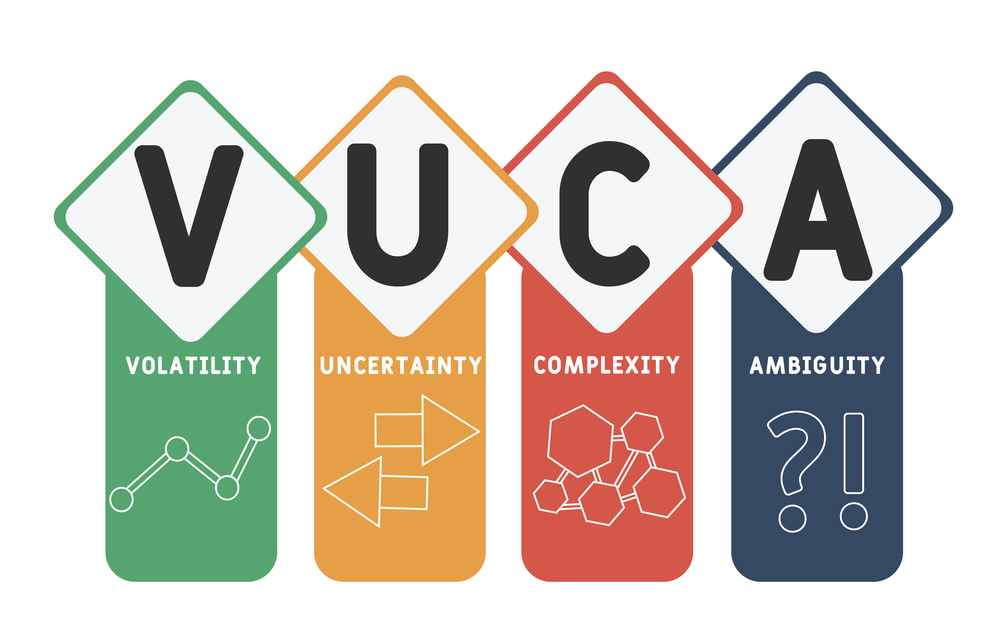 In the realm of leadership, a constant you can count on is the barrage of challenges and crises that will test your resolve and resilience. There are moments when uncertainty seems to be the only sure thing – affecting everything from our personal lives to the global stage – the circumstances we must navigate are fraught with volatility, demanding more from leaders than just strategic insight.
In the realm of leadership, a constant you can count on is the barrage of challenges and crises that will test your resolve and resilience. There are moments when uncertainty seems to be the only sure thing – affecting everything from our personal lives to the global stage – the circumstances we must navigate are fraught with volatility, demanding more from leaders than just strategic insight.
It’s a time when emotional resilience becomes essential, a key trait for those at the helm to survive and thrive amid the stormy seas of the modern business environment. This blog post aims to shed light on the importance of nurturing such resilience, offering guidance on how leaders can fortify themselves to overcome adversity despite a potentially unpredictable journey ahead.
The Importance of Emotional Resilience in Leadership
The significance of emotional resilience in leadership cannot be overstated. The ability of leaders to remain steadfast and adaptable despite adversity is what sets them apart.
 An emotionally immature leader will significantly undermine their team and key relationships. A leader who struggles with self-regulation and awareness, with unpredictable reactions and decisions, will only create a climate of insecurity and confusion. A leader’s inability to manage their emotions will most likely result in poor communication, impulsivity, and a tendency to blame others, eroding trust and respect. When team members are constantly on edge, unsure of how their leader will react to setbacks or bad news, it stifles open dialogue, which in turn discourages innovation and inhibits the team’s ability to cope with challenges.
An emotionally immature leader will significantly undermine their team and key relationships. A leader who struggles with self-regulation and awareness, with unpredictable reactions and decisions, will only create a climate of insecurity and confusion. A leader’s inability to manage their emotions will most likely result in poor communication, impulsivity, and a tendency to blame others, eroding trust and respect. When team members are constantly on edge, unsure of how their leader will react to setbacks or bad news, it stifles open dialogue, which in turn discourages innovation and inhibits the team’s ability to cope with challenges.
Emotionally resilient leaders are adept at managing their stress and emotions, which in turn helps them to better support their teams. They understand that their reactions and attitudes can set the tone for the entire team, influencing morale and productivity.
Why Leadership Resilience Matters
Inspires Confidence: A resilient leader serves as a powerful source of inspiration. Resilient leaders possess an innate ability to reassure their teams during tough times, framing challenges not as insurmountable obstacles but as temporary hurdles that can be overcome. This perspective helps to cultivate a positive, can-do attitude among team members, encouraging them to approach difficulties with determination and creativity. When a leader demonstrates confidence in the face of adversity, it naturally instills a similar sense of assurance in the team, fostering an environment where challenges are met with resilience rather than resignation.
Enhances Decision-Making: The ability to remain emotionally resilient underpins a leader’s decision-making capabilities, especially in high-pressure situations. Leaders who can manage their emotions and remain calm are more likely to assess situations objectively and make informed, rational decisions. This calm and composed approach to problem-solving and decision-making cultivates a sense of trust and stability within the team. Employees are more likely to feel secure and supported when they know their leader can navigate through turbulent times with clear judgment.
 Promotes Employee Well-being: The ripple effects of leadership resilience extend beyond immediate problem-solving and decision-making to influence the broader workplace atmosphere, particularly in terms of employee well-being. Leaders who exhibit resilience contribute to a more psychologically safe and positive work environment, as your team feels more supported and less anxious about potential failures or the consequences of taking risks. By promoting a culture where challenges are approached with a positive and growth-oriented mindset, leaders can enhance the well-being of their employees, leading to increased satisfaction, higher engagement, and, ultimately, better performance across the board.
Promotes Employee Well-being: The ripple effects of leadership resilience extend beyond immediate problem-solving and decision-making to influence the broader workplace atmosphere, particularly in terms of employee well-being. Leaders who exhibit resilience contribute to a more psychologically safe and positive work environment, as your team feels more supported and less anxious about potential failures or the consequences of taking risks. By promoting a culture where challenges are approached with a positive and growth-oriented mindset, leaders can enhance the well-being of their employees, leading to increased satisfaction, higher engagement, and, ultimately, better performance across the board.
Strategies to Build Emotional Resilience
Cultivate Self-Awareness: Self-awareness is critical for leaders. Like anyone, leaders can have flawed perspectives and behaviours, along with inevitable blind spots that might skew their understanding of certain situations. However, through conscious effort and a dedication to personal growth, a leader can enhance their self-awareness and become more effective.
Leaders who possess a keen self-awareness are naturally more adept at engaging with their teams, communicating transparently, making informed decisions, and nurturing a collaborative environment. This, in turn, contributes to better overall results.
Develop a Growth Mindset: With a fixed mindset, people view their talents as unchangeable, focusing on proving themselves rather than improving. It often leads to a culture where only those seen as ‘naturally talented’ get significant opportunities, missing opportunities to benefit from the potential for growth and development.
On the other hand, a growth mindset embraces the idea that abilities can be developed through work and dedication. This perspective fosters a love for learning and resilience, encouraging you to see challenges as chances to grow. It reduces the fear of failure, promoting a culture where everyone is valued for their growth potential, driving innovation and inclusivity.
Build a Supportive Network: Networking isn’t about hurriedly impressing others with your business at social events. It’s about building and nurturing genuine connections that evolve into mutually beneficial professional relationships over time. Surround yourself with a network of mentors, peers, and supportive individuals. Seeking guidance and sharing experiences can alleviate the burden of leadership.
 There are countless situations where having a trusted advisor to speak with to get context, help, or advice is essential. Experience has shown me that well-connected individuals often achieve greater success, sometimes even surpassing those with superior skills, talent, work ethic, or qualifications. Some of the most successful people I’ve encountered have consistently prioritized networking and maintaining their relationships.
There are countless situations where having a trusted advisor to speak with to get context, help, or advice is essential. Experience has shown me that well-connected individuals often achieve greater success, sometimes even surpassing those with superior skills, talent, work ethic, or qualifications. Some of the most successful people I’ve encountered have consistently prioritized networking and maintaining their relationships.
It Doesn’t Have to Be Lonely at the Top
Remember, seeking help in the face of challenges is a strategic strength, not a weakness. It turns hurdles into chances for growth by bringing together different strengths and viewpoints and fostering innovative and effective solutions. Collaboration allows individuals to tap into the collective wisdom and experiences of others, enhancing their resilience and ability to solve problems.
Emotional resilience is not just about bouncing back from setbacks; it’s about growing stronger through them and transforming challenges into opportunities for learning and development. Leaders who embody this trait can maintain a clear vision and a calm demeanour, even when the situation seems insurmountable. They can make thoughtful decisions under pressure, inspire confidence in their teams, and foster a culture of resilience within their organizations.
In the realm of leadership, emotional resilience is not just a desirable trait; it’s a necessity. By understanding its importance and implementing practical strategies, leaders can overcome challenges and emerge stronger and more effective.
As you embark and continue on your leadership journey, remember that true resilience is not the absence of challenges but the ability to thrive despite them.
Did this article spark any career-related questions, plans or concerns?
Reach out today for a free and confidential initial consultation by phone, email, or via direct message on X/Twitter, Facebook or LinkedIn.
P.S. If you haven’t yet done so, stay in the loop by subscribing to my bi-monthly newsletter. Click here. I promise not to spam, and your email address will always stay private.
If you enjoyed this topic or are interested in ongoing professional and leadership development, you’ll also enjoy reading or listening to How to Be Resilient in Your Career: Facing up to Barriers at Work, my book published in 2023 by Routledge. It’s available in print, as an eBook, and on Audible.
More than career coaching, it’s career psychology®.
I/O Advisory Services Inc. – Building Resilient Careers and Organizations TM.



